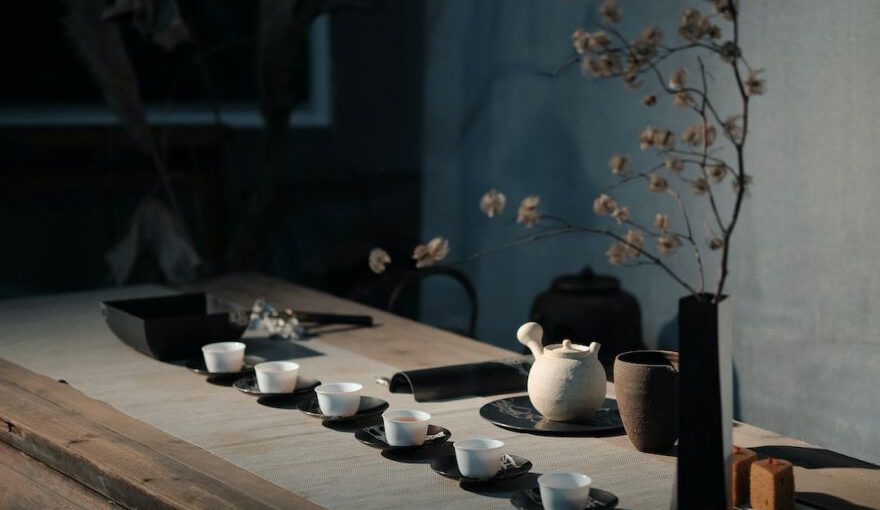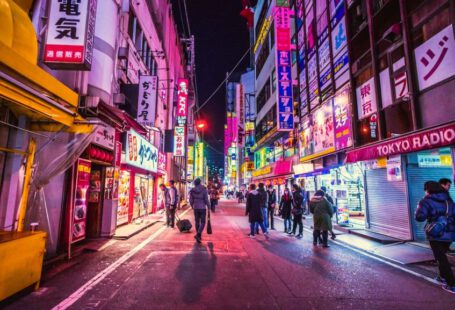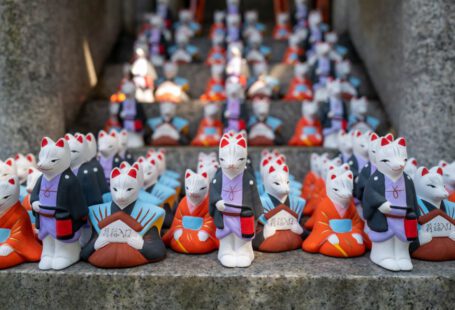The tea ceremony, also known as chanoyu or sado, is a traditional Japanese ritual that revolves around the preparation and serving of matcha, a powdered green tea. It is a highly revered practice that dates back centuries and is deeply ingrained in Japanese culture. The process of tea ceremony is not just about making and drinking tea; it is a harmonious and spiritual experience that encompasses various elements, such as the setting, the tools used, and the etiquette involved. In this article, we will delve into the intricate process of the tea ceremony in Japan.
Preparing the Setting: Creating a Zen-like Atmosphere
Before the tea ceremony begins, the host meticulously prepares the setting, known as the chashitsu, or tea room. The room is designed to create a serene and tranquil ambiance, often featuring traditional Japanese architecture and minimalistic decor. The tatami mat flooring, sliding doors, and a simple alcove displaying a hanging scroll and a flower arrangement all contribute to the Zen-like atmosphere.
The Tools: The Art of Simplicity and Elegance
The tea ceremony involves the use of various tools that are carefully selected for their simplicity, functionality, and aesthetic appeal. The most essential tool is the chawan, a ceramic bowl in which the tea is whisked and served. The chasen, or bamboo whisk, is used to froth the tea, while the chashaku, or bamboo scoop, is used to measure the powdered tea. Each of these tools is crafted with precision and is considered a work of art in its own right.
The Ritual: A Delicate Dance of Grace and Respect
The tea ceremony follows a meticulous ritual that is steeped in tradition and symbolism. The host performs a series of choreographed movements, each with its own meaning and purpose. These movements include the cleansing of the utensils, the preparation of the tea, the serving of the tea, and the cleaning of the utensils afterwards. Every action is performed with grace, precision, and utmost respect, emphasizing the importance of mindfulness and attention to detail.
The Tea: A Taste of Tradition
The tea used in the ceremony is matcha, a finely ground powder made from shade-grown tea leaves. Matcha has a rich, earthy flavor and is known for its vibrant green color. The tea is prepared by whisking a small amount of matcha powder with hot water using the bamboo whisk. This creates a frothy and invigorating beverage that is then served to the guests. The tea itself is not the main focus of the ceremony, but rather a means to facilitate a shared experience and promote a sense of tranquility and harmony.
The Etiquette: A Code of Conduct
One of the defining aspects of the tea ceremony is the strict code of etiquette that governs the behavior of both the host and the guests. Respect, humility, and mindfulness are at the core of this code. Guests are expected to bow upon entering the tea room, express gratitude for each gesture, and adhere to specific protocols, such as the way they hold and drink from the tea bowl. The host, in turn, must anticipate the needs of the guests, create a welcoming atmosphere, and ensure that every aspect of the ceremony is executed flawlessly.
In Conclusion: A Celebration of Tradition and Harmony
The tea ceremony in Japan is not just a simple act of making and drinking tea; it is a profound and spiritual experience that embodies the values of harmony, respect, and mindfulness. From the preparation of the setting to the selection of the tools, every aspect of the ceremony is carefully thought out and executed with precision. It is a celebration of tradition, a moment of tranquility, and an opportunity for connection and reflection. The tea ceremony is a testament to the beauty and elegance of Japanese culture and continues to be cherished and revered to this day.





